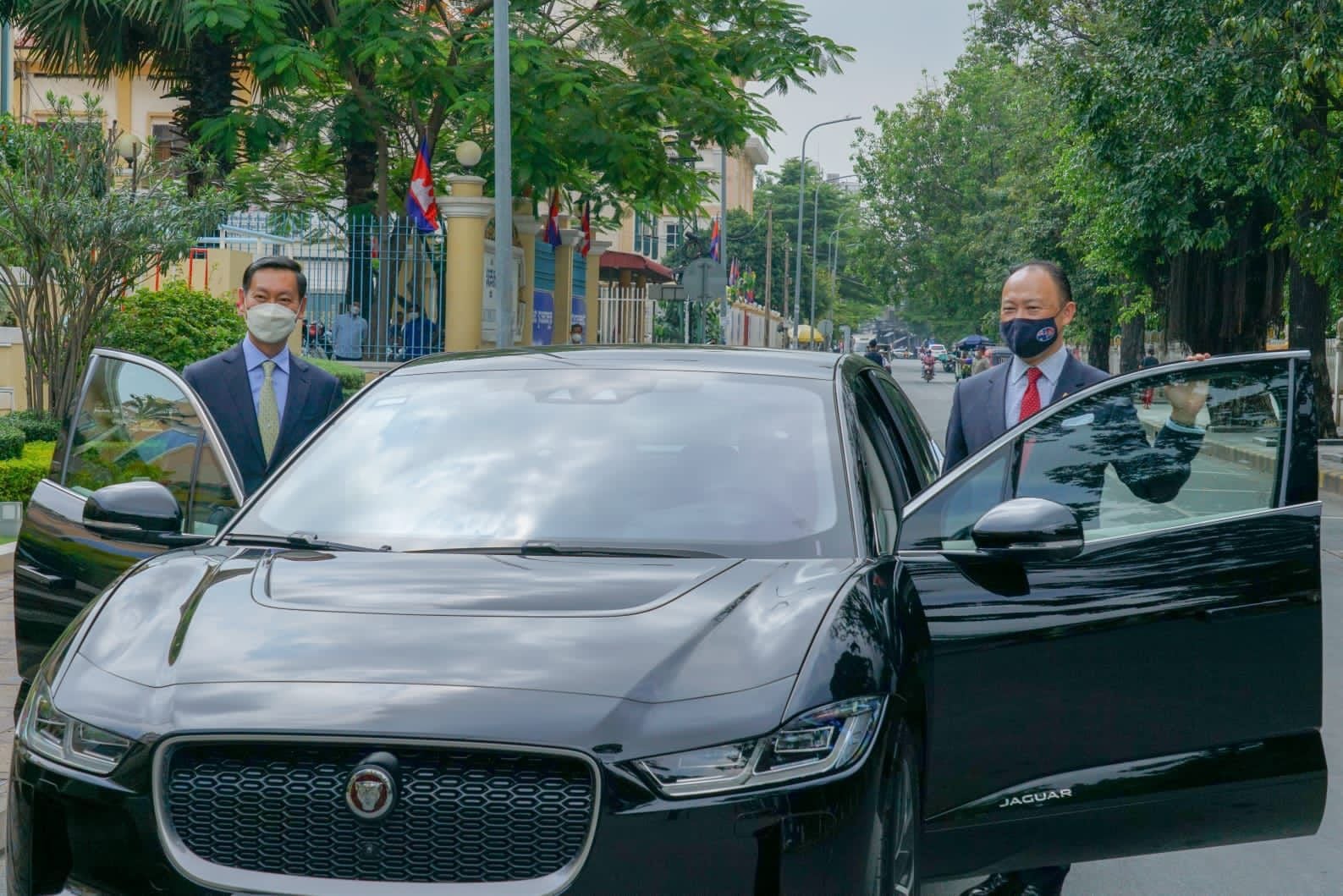Brian Badzmierowski
Electric vehicles (EV) could play a vital role in reducing Cambodia’s carbon footprint but a long road lies ahead to build the infrastructure needed to make them an attractive option for the masses.
At a panel discussion on the Electrification of Vehicles for a Cleaner Cambodia held this week, Managing Director of Electricite du Cambodge (EDC) Keo Rattanak said incorporating EVs into the public transportation sector would be the easiest way to make the technology available to the general population.
“That would have a much bigger impact [than personal EVs]. Of course, individual EV cars will have an impact, but I think it would be better still if that could be extended to public transport, be it rail or buses that would be able to transport people in larger numbers,” Rattanak said.
Rattanak was joined by Minister of Public Works and Transport Sun Chanthol, British Ambassador to Cambodia Tina Redshaw, and Australian Ambassador to Cambodia Pablo Kang at the discussion.
The Electric Vehicle won’t take off without investment in Cambodian infrastructure
Both ambassadors drove panel members to the event held at Raffles Hotel in their fully electric Jaguar I-PACE cars. The British Embassy was the first local embassy in Cambodia to use a fully electric car.
Chanthol said: “I was so impressed with the quality of the car. You just don’t see the difference between a normal combustion engine and an EV car, except this car is quieter. It’s a great car. I think EV has a future in the world and also in Cambodia.”
The minister said there are about one million registered cars and trucks on Cambodia’s roads, but only 42 EVs are registered in the country.
He added that tax breaks will incentivize people to purchase EVs and currently the effective tax rate on EVs is half of that of petrol-fuelled cars.
However, infrastructure such as charging stations need to be built as well to make owning an EV a worthy investment.
Rattanak and Chanthol agreed that this infrastructure will only be built by attracting investments from and forming partnerships with the private sector.
“Charging infrastructure should not fall one hundred percent on electric utility [companies]. It should be, in my view, a combination of a public-private sector partnership. To expect utilities [companies] to build charging stations for everyone, would be a tall order. Not because we don’t want to do it but the immense investment requirement would be an obstacle,” he said.
EVs and the impact on Cambodia’s environment
While the issue was raised that EVs would initially be charged with coal-powered electricity from the grid, somewhat limiting their overall positive environmental impact, Redshaw said the reduction of emissions alone made them a worthwhile investment.
“The business case for Electronic Vehicles is clear to us. They’re cleaner, they’re cheaper to run. They are increasingly cheaper to buy. In a few years it’s not going to be possible to buy a new petrol or diesel car so being a first adopter is a great thing to be,” she said.
While the idea of being able to rely solely on renewable energy to charge EVs is likely some time off, Rattanak said Cambodia is trending in the right direction as it invests more in renewable energy, particularly solar energy.

He said Cambodia produces over nine percent of its power from solar energy, which is higher than the global average of around three percent.
Kang said Australia has been working with the government on its renewable energy plan and that while there will be heavy start-up costs on infrastructure such as backup batteries, storage, and engine backups, it will all be worth it in the long run.
“The preliminary analysis from the strategy has shown that even with those additional infrastructures and start-up costs, variable renewable energy if we increase the uptake here, will have a positive impact in terms of making the electric system cheaper,” he said.
Mapping the Electric Vehicle investment road ahead
Green investment is has also been earmarked to feature on Cambodia’s newly approved Law on Investment which aims to provide incentives to prioritized sectors to foster development in science and technology, job creation, skills training, research, innovation and small and medium enterprises.
Alda Waddell, General Manager of Jaguar Landrover Cambodia told Cambodia Investment Review that the I-Pace performance is exceptional however stated local infrastructure needed to be upgraded.
“The I-Pace is a phenomenal car, has amazing vehicle engineering and the performance is matched to anything I have driven,” Waddell said.
“We do have a challenge in Cambodia though with the charging of the unit. It’s very complex and will need cooperation from the original equipment manufacturer, government, and the franchises to make this work. All three have a responsibility. EV is the future of Automotive so we cannot ignore it,” she added.
In response to issues of infrastructure capabilities, Chanthol said the ministry would be in close contact with other relevant ministries, the EDC, and the private sector to ensure EV infrastructure is taken into account, especially on new road constructions such as the Phnom Penh-Sihanoukville expressway.
He said he hopes that EVs will play a role in reducing emissions in Cambodia, where transportation accounts for 46 percent of the country’s total energy consumption.
Bridget McIntosh, the Country Director of EnergyLab Cambodia, which co-hosted the event, told Cambodia Investment Review that the firm is a big supporter of EVs but they must be handled properly.
“The key is that EVs can support Cambodia integrate more solar and wind into the electricity grid,” she said. EVs can be charged overnight when demand is low, or during day times of abundant solar power. In the future, customers may even be able to put power into the grid at peak times.
But we need to be careful. If charging is not carefully managed and people charge at already peak times, this could put a strain on the grid,” she said.
Last year, a government report stated from 1990 to 2020 there had been a total of 5 million registered vehicles increasing by more than 300,000 to 400,000 vehicles year on year with motorbikes accounting for 40%.





